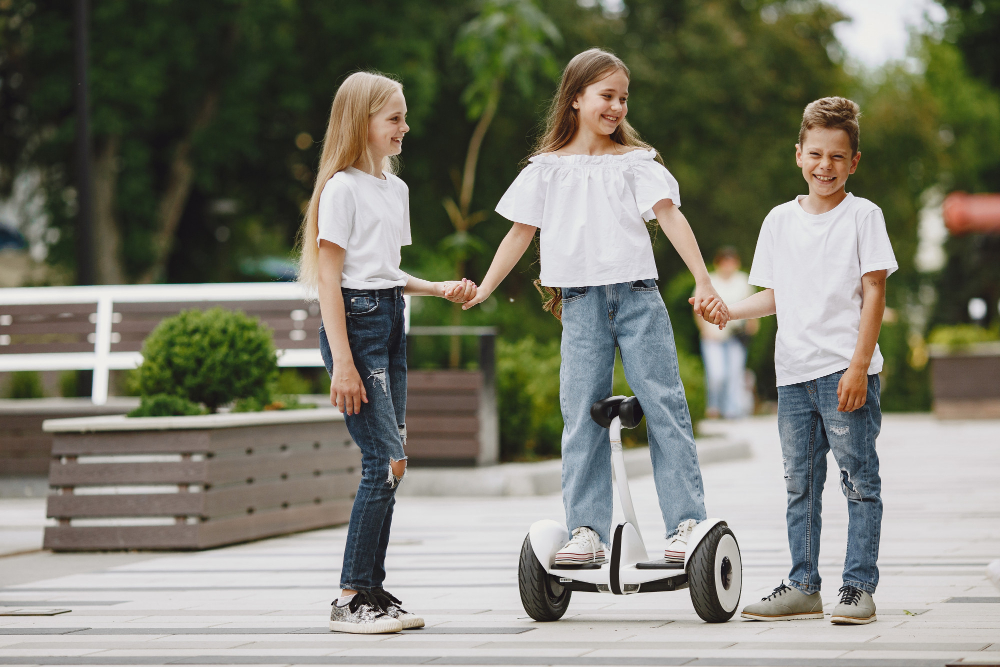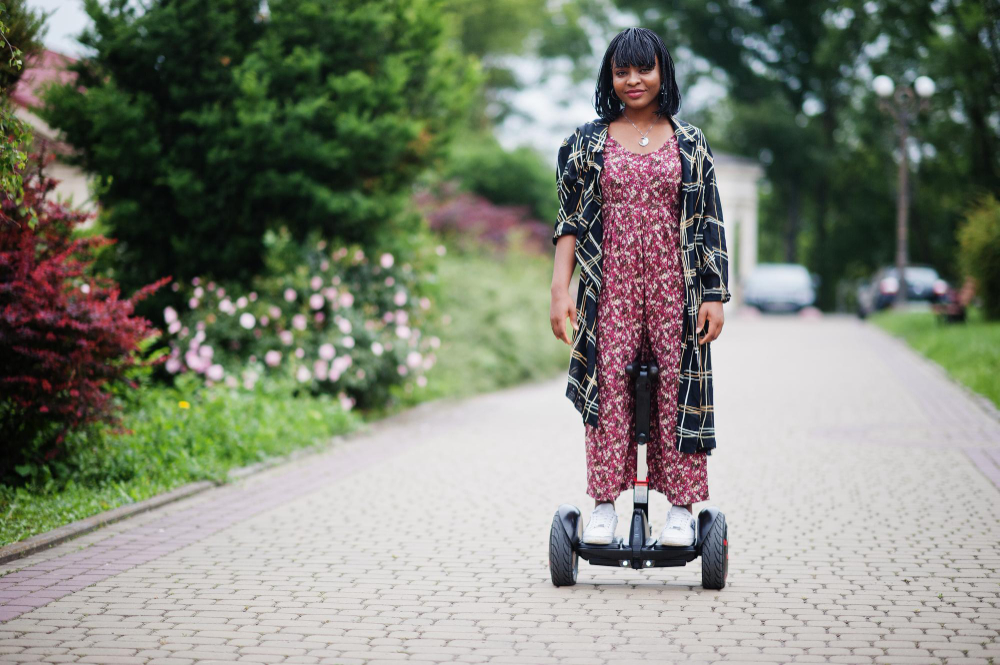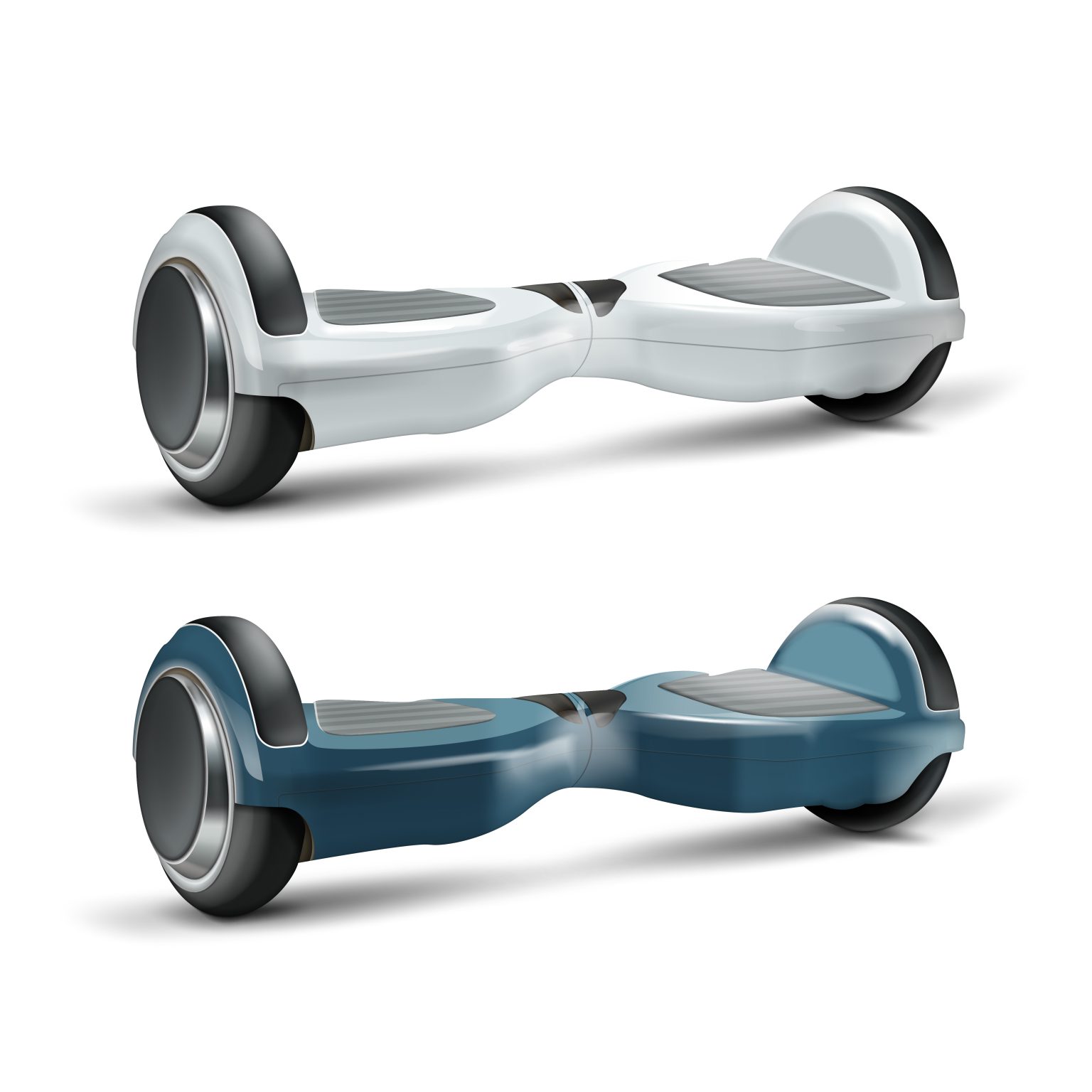Hoverboards, the self-balancing personal transporters, have emerged as more than just a trendy gadget; they represent a shift towards futuristic, efficient mobility. In our fast-paced world, where every minute counts, hoverboards offer a unique blend of convenience and fun. They are perfect for short commutes, effortlessly bridging the gap between public transport stops and your final destination, thereby reducing reliance on cars for short distances.
This not only eases traffic congestion but also contributes to a greener environment by cutting down on carbon emissions. Moreover, hoverboards are a brilliant way to enhance balance and coordination, offering a form of light exercise that is both enjoyable and engaging.
For those who value a blend of efficiency, environmental consciousness, and a touch of futuristic thrill in their daily commute, a hoverboard is an indispensable gadget. Its growing popularity is a testament to its ability to redefine personal transportation, making it not just about the destination, but also about the journey.
Things to consider when Buying a Hoverboard

UL 2272 Certification: This certification ensures the hoverboard meets specific electrical and fire safety standards set by Underwriters Laboratories. It’s a guarantee of basic safety in the construction and operation of the hoverboard, particularly in terms of its battery and charging system.
Quality Battery: Opt for hoverboards with batteries from well-known manufacturers. A quality battery not only ensures longer life and more consistent performance but also reduces the risk of overheating and related accidents.
Motor Power: The power of the motor, usually ranging from 250W to 400W, determines the hoverboard’s speed and ability to climb inclines. Higher wattage means more power, which is particularly important if you live in a hilly area or are a heavier rider.
Appropriate Speed: Consider the hoverboard’s top speed, which typically ranges between 6-10 mph. Choose a speed you are comfortable with, especially if you are a beginner. Higher speeds might offer more thrill but require better control and balance.
Sufficient Range: Look for a hoverboard that offers a range (distance per charge) that meets your daily needs. On average, hoverboards can travel 10-15 miles on a single charge. Consider your typical journey distances when assessing this feature.
Sturdy Build Quality: The durability of the hoverboard is essential. A well-built hoverboard should withstand daily wear and tear and not be prone to damage from minor bumps and scrapes. Look for robust materials and solid construction.
Wheel Size: Wheels typically range from 6.5 inches for regular models to 10 inches for off-road models. Larger wheels are better suited for uneven terrain, while smaller wheels are ideal for smooth, flat surfaces.
Weight Capacity: Ensure the hoverboard can support your weight. Most standard hoverboards can support up to 220 pounds. Overloading the hoverboard can affect its performance and longevity.
Charging Time: A reasonable charging time is between 2 to 4 hours. Longer charging times can be inconvenient, especially if the hoverboard is used frequently or for commuting.
Beginner-Friendly Features: Features like a learning mode, which limits speed and enhances stability, can be invaluable for new riders. These features help in gradually improving balance and control over the hoverboard.
LED Lights: LED lights are not just for aesthetics; they are crucial for safety, especially when riding in low-light conditions. They enhance the visibility of the rider and can also help in navigating in the dark.
Bluetooth Speakers: For those who enjoy music or podcasts on the go, some hoverboards come equipped with Bluetooth speakers. This feature allows for wireless music streaming from your smartphone. here you know how to connect the hoverboard Bluetooth to Android and iOS.
Smartphone Integration: Some advanced hoverboards offer connectivity with a smartphone app. These apps can show you speed, and battery life, and even track your route. They can also help in diagnosing issues with the hoverboard.
Water Resistance: While few hoverboards are fully waterproof, some level of water resistance is beneficial. It protects the hoverboard from damage due to splashes or riding in light rain.
LED Display: An LED display panel can provide real-time information like speed, battery level, and more. This feature helps monitor the hoverboard’s performance during use.
Terrain Adaptability: If you’re planning to ride on surfaces other than smooth pavement, consider a hoverboard designed for varied terrains. These usually have larger, more robust wheels and stronger motors.
Hoverboard Weight: The weight of the hoverboard affects its portability. Lighter models are easier to carry around, especially if you need to take it on public transportation or upstairs.
Smart Safety Features: Features like auto-balancing technology, anti-slip footpads, and gyroscopic sensors make for a safer and more stable ride, which is particularly important for beginners or children.
Solid Warranty and Support: A comprehensive warranty can cover defects and damages that aren’t caused by misuse. Also, consider brands that offer good customer support for assistance and queries.
Reputable Brand: A brand with a good reputation is often indicative of the quality and reliability of its products. Researching brand history and customer reviews can provide insights into the hoverboard’s performance and durability over time.
What to Avoid When You Buy a Hoverboard?

Non-Certified Hoverboards: Safety should be your top priority. Avoid hoverboards that lack proper safety certifications like UL 2272. These certifications ensure that the hoverboard has passed rigorous electrical and fire safety tests, reducing the risk of accidents or malfunctions.
Unknown or Cheap Battery Brands: The battery is the heart of a hoverboard. Using low-quality or unknown-brand batteries can lead to poor performance and serious safety risks, including overheating and potential fires. Always opt for hoverboards with reputable, high-quality batteries.
Excessive Speed for Beginners: If you’re new to hoverboarding, a model with excessively high speed can be dangerous. High-speed hoverboards require better balance and control, which comes with experience. Start with a model that offers a manageable speed and work your way up as you gain confidence and skill.
Compromising on Range for Price: It might be tempting to go for a cheaper model, but if it doesn’t offer the range you need, it’s not a good investment. Consider how far you need to travel on your hoverboard regularly and choose a model that can cover that distance comfortably on a single charge.
Flimsy Construction and Build: Durability is key. Avoid hoverboards that feel flimsy or are made of low-quality materials. These are more likely to suffer damage from regular use or minor accidents, leading to additional repair costs or the need for early replacement.
Ignoring Wheel Size for Intended Use: The size of the hoverboard’s wheels can greatly impact its usability. Smaller wheels are generally fine for smooth, indoor surfaces, but if you plan to use your hoverboard outdoors, larger wheels offer better stability and can handle rougher terrain.
Overlooking Weight Limitations: Check the weight limit of the hoverboard. Using a hoverboard that can’t adequately support your weight can lead to reduced performance, increased wear and tear, and safety risks.
Long Charging Times: Hoverboards with excessively long charging times can be impractical, especially if you plan to use them frequently or for commuting. Look for models that offer a balance between battery life and reasonable charging durations.
Complex Operating Mechanisms: A hoverboard should be user-friendly, especially for beginners. Avoid models with overly complex control mechanisms or unclear instructions, as these can hinder the learning process and lead to accidents.
Lack of Essential Safety Features: Features like LED lights for visibility, non-slip footpads, and effective braking systems are important for safety. Models without these features can put the rider at risk, especially in low visibility conditions or when maneuvering.
Disregarding Terrain Compatibility: If you plan to ride over different types of surfaces, ensure the hoverboard is suited for that. Avoid models that are only designed for flat surfaces if you need one for varied terrains.
Choosing Heavily Weighted Models: If portability is a concern, avoid choosing heavy models. A lightweight hoverboard is easier to carry, especially if you need to take it on public transport or up and down stairs.
Ignoring Warranty and Customer Support: A hoverboard without a solid warranty or accessible customer support can become a headache if issues arise. It’s crucial to have reliable support for troubleshooting and repairs.
Opting for Unestablished Brands: While lesser-known brands can offer competitive prices, they might not provide the same quality and reliability as established ones. It’s worth investing in a brand with a proven track record.
Paying for Unnecessary Features: Don’t be swayed by flashy features that don’t enhance the hoverboard’s functionality or safety. Stick to features that meet your needs to ensure you’re not overpaying for gimmicks.
Neglecting User Reviews and Feedback: User reviews can provide valuable insights into a hoverboard’s real-world performance and durability. Avoid models with consistently poor or concerning feedback.
Falling for Trendy Designs Over Functionality: While aesthetics are important, functionality and safety should come first. Don’t choose a hoverboard solely based on its looks if it doesn’t meet your practical requirements.
Forgetting About Water Resistance: If you’re likely to use the hoverboard in various weather conditions, don’t overlook the importance of water resistance. Non-resistant models can suffer damage in wet conditions.
Skimping on Safety Gear: Never compromise on safety. Avoid using a hoverboard without the necessary safety gear like helmets and knee pads, regardless of the hoverboard’s built-in safety features.
Conclusion
when buying a hoverboard, focus on safety, durability, and your specific needs. Make sure to check for safety certifications, choose a hoverboard with a reliable battery, and consider the right features for your use, like wheel size and speed.
Avoid gimmicks, ignore unproven brands, and don’t sacrifice essential features for appearance. Remember, practice makes perfect with hoverboards, and always prioritize safety with the right gear. By being well-informed and cautious in your choice, you’ll find a hoverboard that offers both fun and practicality, enhancing your daily travels.

